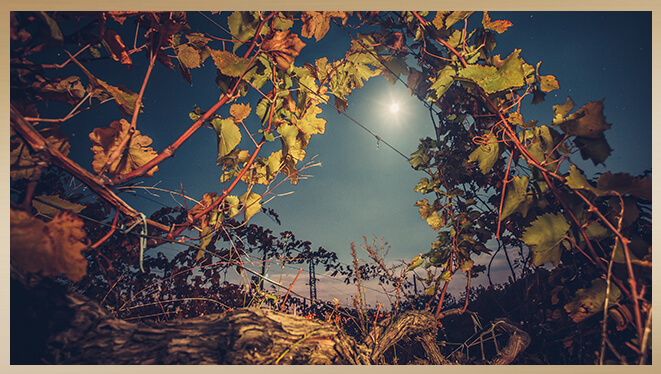

If a great winemaker were a cocktail, the recipe might look something like this: three parts meticulous, two parts expressive, one part maniacal. Combine all ingredients, strain into a busy cellar and garnish with a good pair of boots.
Few industries depend so heavily on a single stretch of the year, just a handful of weeks in length. Winemakers get one chance to create something enchanting. And to further complicate the equation, each year’s crop is a little different, requiring different kinds of care as the fruit is gently nudged in the direction of wine. It’s enough to drive a typical person insane.
Fortunately, winemakers are a special breed. They shepherd the year’s yield from field to barrel with the kind of commitment most reserve for their children. They pour their hearts into something that will likely never lead to trophies, playoff appearances or celebrity. Instead, the hope is that someday that work is popped open, and what’s inside whisks the drinker away to a very specific time and place.
What happens during that critical stretch between harvest and pouring the wine into barrels? It’s a mix of artistry, science, manual labor and experience — to the tune of 18-hour workdays and a lot of caffeine.
While harvest describes the picking of the fruit, crush involves the many steps that take the crop from crush pad to bottle. It all begins when the first truckload of Syrah or Pinot Noir arrives at the winery. The winemaker is first to greet the delivery, wearing a smile that stretches from ear to ear. There’s promise in the air, and the rest of the winemaking crew can’t help but be moved by it.
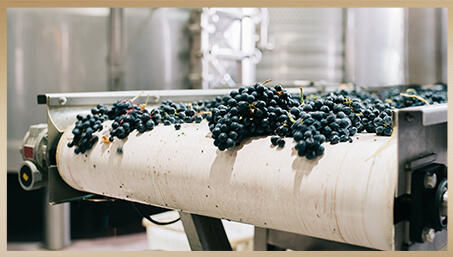
SORTING
The best wines are the result of the best fruit. There is no cattle call for grape clusters. Instead, the winemaking team sets up a sorting line and rigorously scans the fruit. Flawed grapes—whether it be mold, underripeness, heat damage or something else entirely — are discarded. Some producers utilize shaker tables for such a task, vibrating, conveyor-belt-like contraptions that spread out the crop so it can be more closely analyzed. Other producers go an extra step, field sorting prior to picking. It’s one of many quality control hoops a grape must navigate en route to becoming a wine.
Healthy clusters are then destemmed. Some winemakers opt to leave the stems intact, keen on the added structure, flavor and tannin they can impart in the resulting wine. Generally, it’s the berries winemakers are looking to extract. An incredibly effective machine aptly named the destemmer does the work here, using centrifugal force generated by a rotating cylinder to separate the grapes and stems. The noisy, fast-moving machine may not look the part, but it’s a delicate instrument, maintaining the integrity of the fruit so that its many traits can be turned into a dynamic wine.
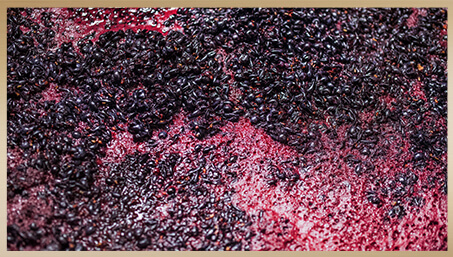
FERMENTATION
Of the many phases of winemaking, fermentation is arguably the most sensory. As the fruit converts sugars to alcohol, there are endless opportunities to see, smell, taste and feel the beginnings of a young wine. The winemaker can elect to let the wine ferment naturally or pitch yeast to jump-start the process. Those in favor of the former route tout the finished wine’s purity, elegance and personality. Those who inoculate their wines with commercial strains appreciate the control and resulting rate of fermentation. It’s one more fork in the road that seems subtle at the time but can lead to big profile variations in the finished product.
As a red wine ferments, it forms a cap of grape skins and other solids at the top of the fermenter. In the name of extraction, the winemaking crew punches down the cap at least once daily, employing a plunger-like device to break apart the stubborn surface layer. Those engaged in punching down are treated to both a tremendous physical workout as well as hypnotic fragrances of wild berries, bramble and pie crust. For fermentations too large for a manual punch down, crews will pump the wine over, pulling free-run juice from the base of the fermenter to wet the cap with. Throughout, the evolving wine is tested daily, and key stats like pH, ethanol and more are monitored.
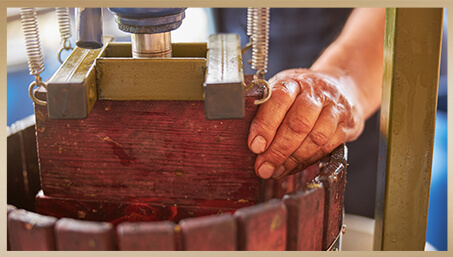
PRESSING
A fermentation will generally run anywhere from one to two weeks. Once the wine has achieved dryness (when all of the sugars have successfully converted to alcohol), it’s time to press. A white wine is typically pressed prior to fermentation while a red is pressed near or at the end of this particular stage. Why? Unless you’re going for an orange wine, extended skin contact for white wines is generally unnecessary. With reds, hanging on to those skins is paramount as they afford color (anthocyanins), tannin and other useful phenolic compounds. These are the bones that build the skeleton of the wine.
One of the largest and most sophisticated tools in the cellar, the press gently leeches out the many layers of structure buried in the remaining grape solids. It can be programmed by grape variety to squeeze the fruit in a variety of ways. You’ve likely seen a rustic basket press, still called upon by certain winemaking traditionalists. More popular are the bladder presses, which can handle more fruit and provide winemakers with more pressing style options.
The first trickles of juice that land in the press pan announce the wine’s adolescence. It’s showing lots of character now, and you’re offered a telling glimpse of what it wants to be when it fully grows up. If the winemaker hasn’t proposed a toast during crush yet, this is as good a time as any (especially if what’s in the glass is the maiden pressing of the vintage).
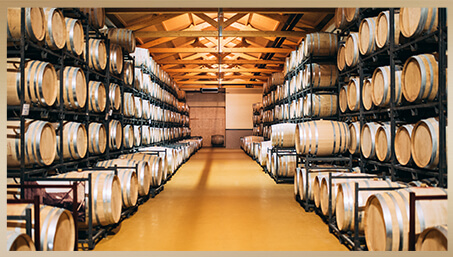
RACKING
Simply put, racking a wine means moving it from vessel to vessel. A wine can be racked from press to tank just as it can from tank to barrel. Yet, transporting a wine is a bit of a tightrope walk, as you don’t want to introduce too much oxygen nor disturb the wine too much. At the same time, a wine must change venues now and again, and keeping some wines on their lees (spent yeast cells and other solids) for too long can lead to unwanted flavors and aromas. So, the winemaker racks with purpose, gracefully so.
The next stop on a pressed red wine’s journey is usually a settling tank. Here, the wine can regain its composure as unwanted solids fall to the base of the vessel. Once a wine is moved, it’s generally left in peace for a stretch as the move to a new venue alone can cause something akin to bottle shock. These few days offer an ideal stretch for the winemaker to decide on their barrel regiment for the year, selecting specific cooperage, barrel ages (new and used) and toast levels as well as steaming and sterilizing them beforehand.
Putting a wine to bed in a fresh barrel is a wildly rewarding task. The moment that Pinot Noir leaves the barreling wand and lands on the French oak, a fireworks display of aromatics erupts from the barrel. Vanilla bean, toast, raspberry and crème brülée waft through the cellar. The barrel is filled to the brim to prevent oxidation, a bung is applied to seal it, and the first lot is history.
At this point, there’s a collective exhale among the winemaking team. There’s plenty more work ahead — topping barrels, managing any secondary fermentation, blending — but the crush is over. The wines have graduated and are off on their own, growing as individuals in their new barrel homes.
If the winemaker hasn’t proposed a second toast yet this crush, this is an ideal time to do so.
